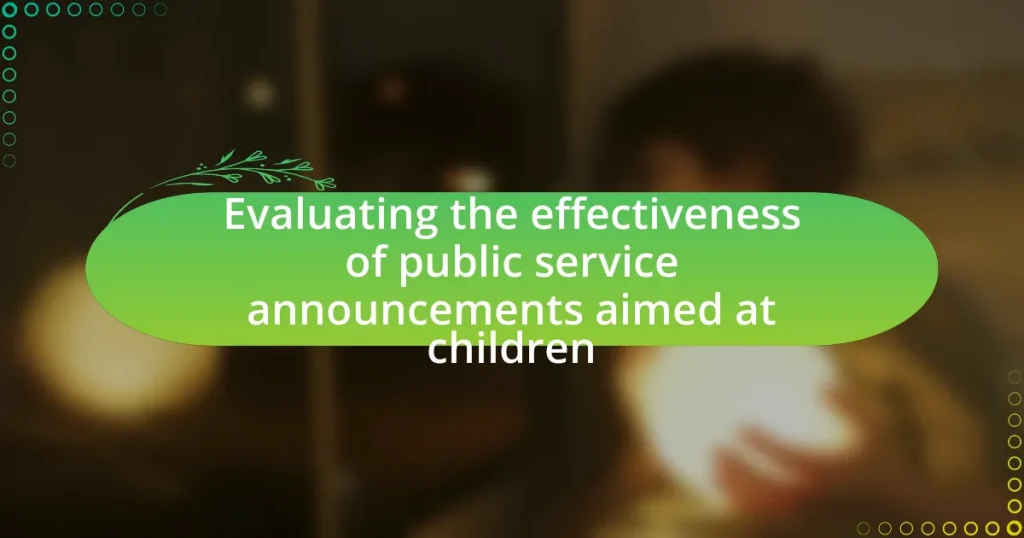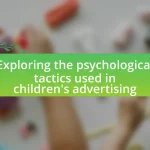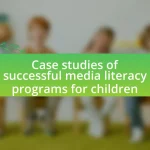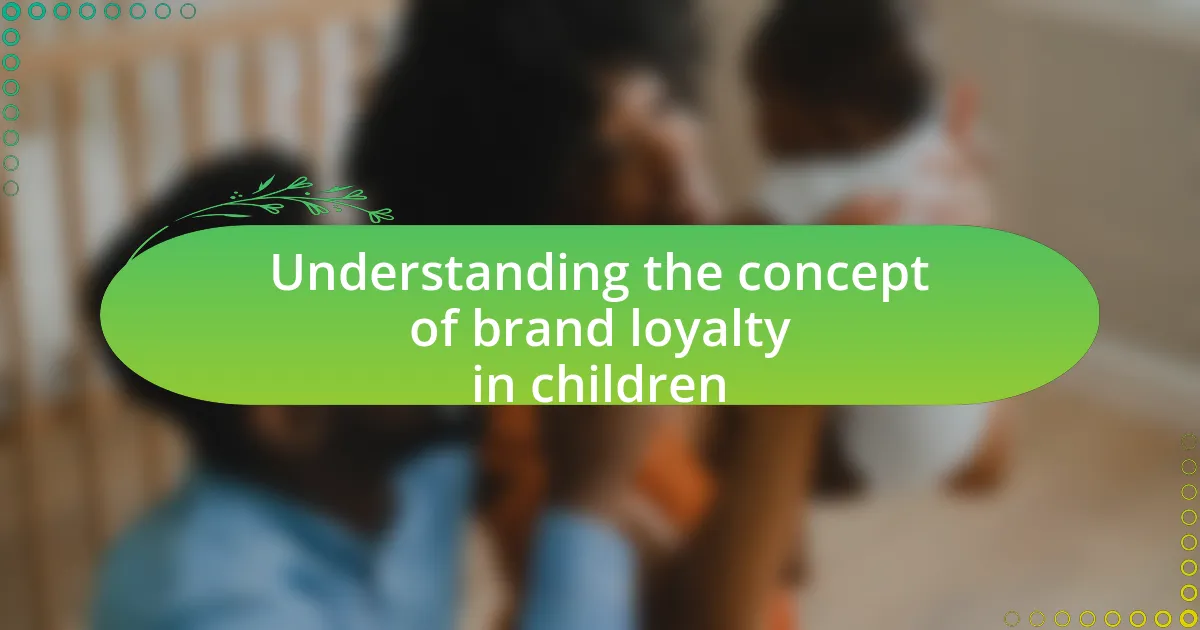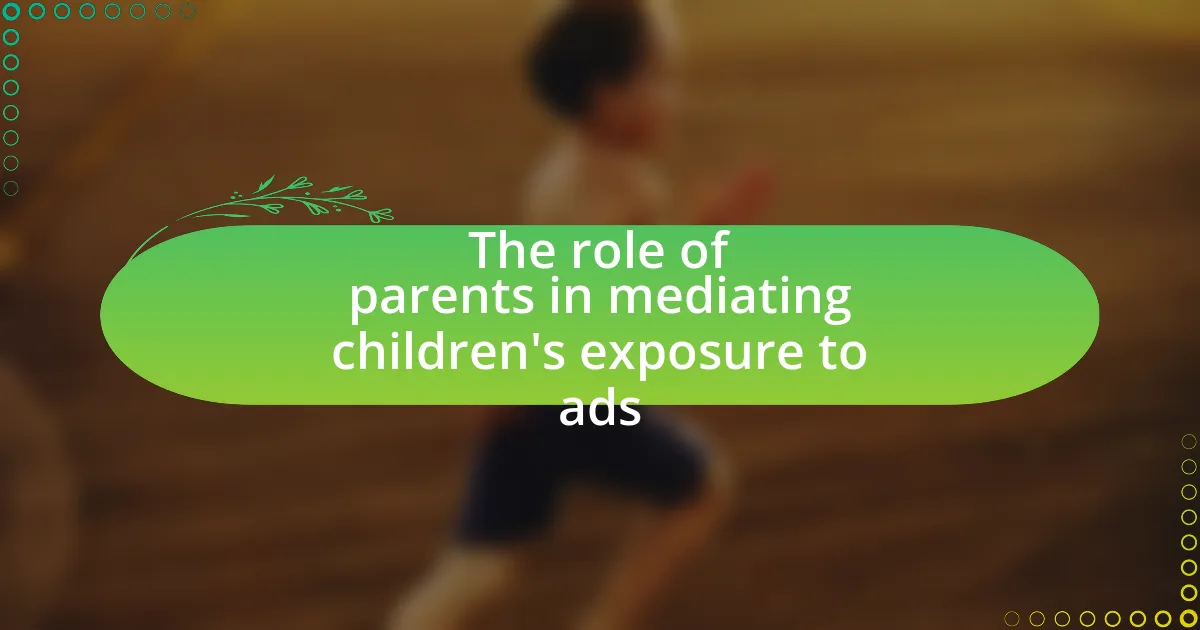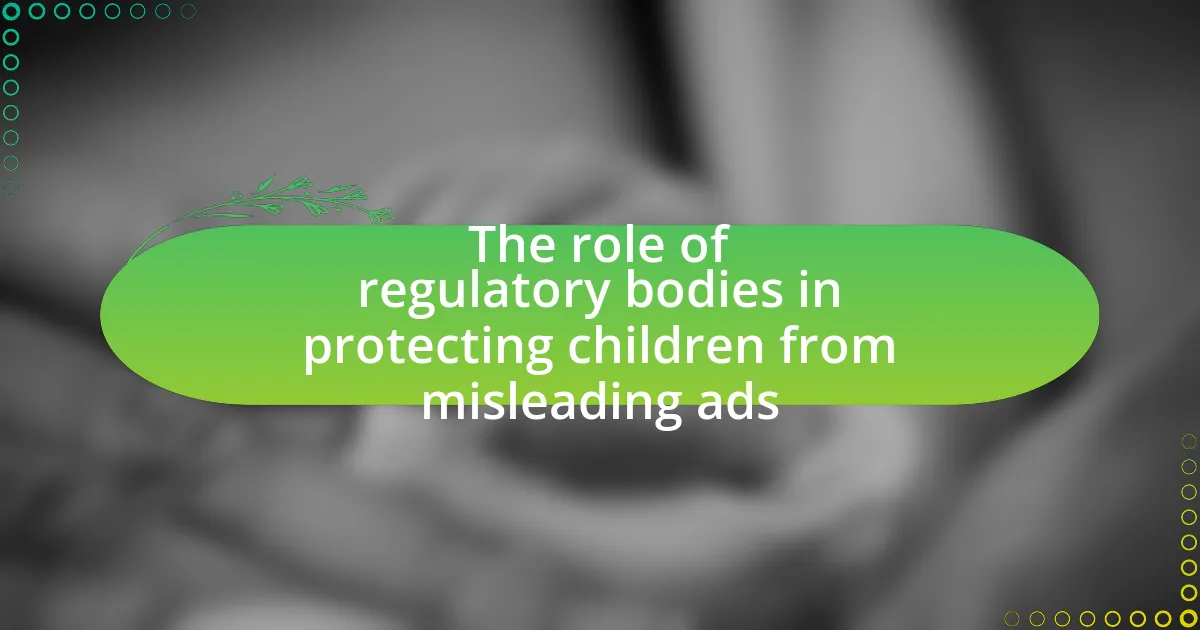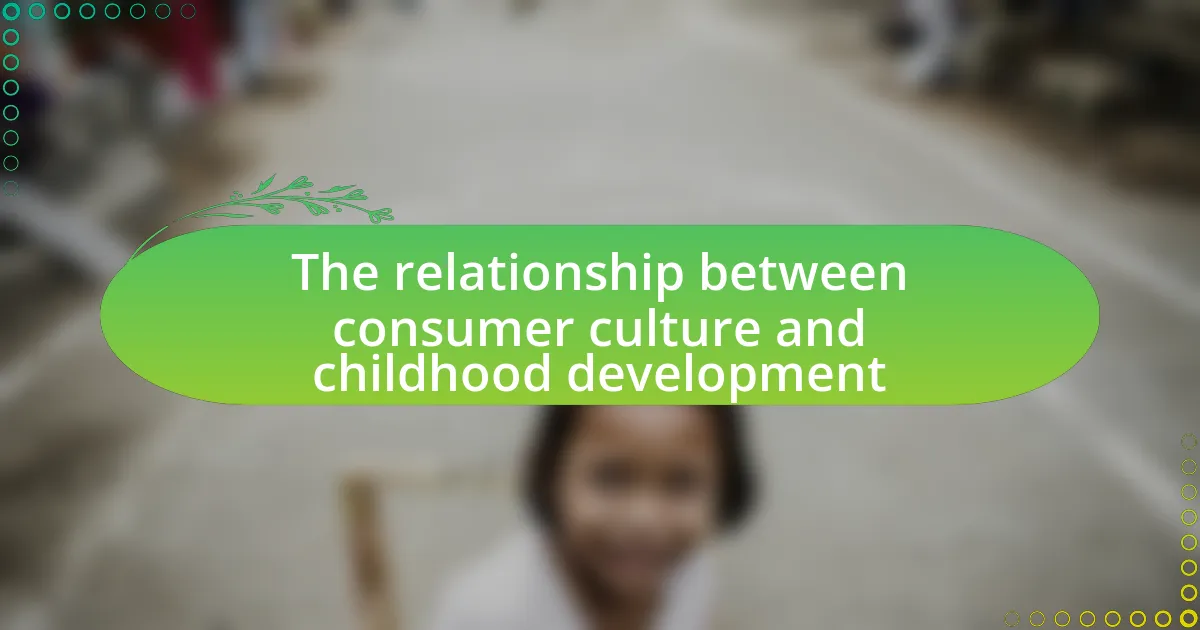Public service announcements (PSAs) aimed at children are designed to educate young audiences about critical social issues, health, and safety through engaging formats. This article evaluates the effectiveness of these announcements by examining their characteristics, goals, and the importance of tailoring content to children’s developmental stages. It discusses the differences between PSAs and traditional advertisements, the metrics used to assess their impact, and the challenges faced in evaluating their effectiveness. Additionally, the article highlights strategies for enhancing PSAs, including the role of parents and educators in reinforcing messages, and the significance of cultural sensitivity and age-appropriate content in communication.
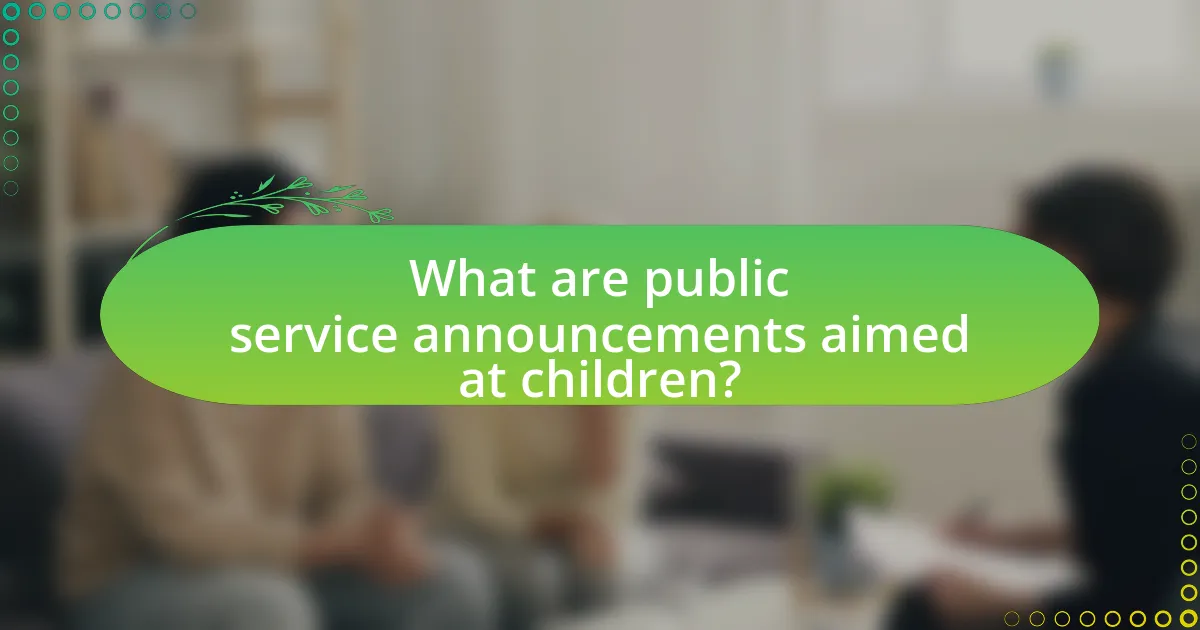
What are public service announcements aimed at children?
Public service announcements aimed at children are communication tools designed to inform and educate young audiences about important social issues, health, safety, and behavioral norms. These announcements often utilize engaging formats such as animated videos, catchy songs, or relatable characters to capture children’s attention and convey messages effectively. Research indicates that when tailored to children’s developmental stages and interests, these announcements can significantly influence their knowledge, attitudes, and behaviors regarding topics like nutrition, bullying, and environmental awareness. For instance, a study published in the Journal of Health Communication found that children exposed to targeted public service announcements demonstrated improved understanding of healthy eating habits compared to those who were not exposed.
How do public service announcements differ from traditional advertisements?
Public service announcements (PSAs) differ from traditional advertisements primarily in their purpose and funding. PSAs aim to inform and educate the public about social issues, health, or safety, often funded by government agencies or non-profit organizations, while traditional advertisements seek to promote products or services for profit, funded by businesses. For example, PSAs may address topics like anti-smoking campaigns or public health initiatives, whereas traditional ads focus on selling consumer goods. This distinction highlights the altruistic intent behind PSAs compared to the commercial objectives of traditional advertising.
What are the key characteristics of effective public service announcements for children?
Effective public service announcements for children are characterized by clarity, engagement, and age-appropriate messaging. Clarity ensures that the message is easily understood, using simple language and visuals that resonate with a young audience. Engagement involves incorporating elements like storytelling, humor, or relatable characters to capture children’s attention and maintain their interest. Age-appropriate messaging is crucial, as it aligns the content with the cognitive and emotional development of the target age group, ensuring that the information is relevant and impactful. Research indicates that PSAs designed with these characteristics are more likely to influence children’s attitudes and behaviors positively, as evidenced by studies showing increased comprehension and retention of information when messages are tailored to their developmental stage.
Why is the target audience important in crafting these announcements?
The target audience is crucial in crafting public service announcements aimed at children because it directly influences the message’s relevance and effectiveness. Understanding children’s developmental stages, interests, and comprehension levels allows for tailored content that resonates with them. For instance, research indicates that messages designed for children aged 5-7 should use simple language and engaging visuals to capture attention, while those aimed at older children can incorporate more complex narratives. This targeted approach enhances the likelihood of the message being understood and acted upon, as evidenced by studies showing that age-appropriate messaging significantly increases retention and behavioral change in young audiences.
What are the primary goals of public service announcements for children?
The primary goals of public service announcements (PSAs) for children are to educate, inform, and promote positive behaviors. These announcements aim to raise awareness about important issues such as health, safety, and social responsibility, thereby influencing children’s attitudes and actions. For instance, PSAs addressing topics like bullying or healthy eating are designed to provide children with essential information and encourage them to make informed choices. Research has shown that effective PSAs can lead to increased knowledge and behavioral change among young audiences, demonstrating their impact on public health and social issues.
How do these goals align with children’s developmental stages?
The goals of public service announcements (PSAs) align with children’s developmental stages by addressing their cognitive, emotional, and social growth. For instance, PSAs designed for younger children often utilize simple language and engaging visuals to capture attention, which corresponds with their developing language skills and short attention spans. Research indicates that children aged 3 to 5 are in the preoperational stage of cognitive development, where they learn through play and visual stimuli (Piaget, 1952).
As children progress to ages 6 to 12, they enter the concrete operational stage, where they begin to understand logical reasoning and can process more complex information. PSAs targeting this age group often incorporate relatable scenarios and problem-solving elements, which resonate with their growing ability to think critically and understand consequences. Studies show that children in this age range can better retain information presented in a narrative format, enhancing the effectiveness of the message (Fisher et al., 2018).
Finally, for adolescents aged 13 and older, PSAs often focus on social issues and peer influence, aligning with their developmental need for identity formation and social acceptance. Research demonstrates that messages addressing peer dynamics can significantly impact behavior change in this demographic (Steinberg, 2014). Thus, the alignment of PSA goals with children’s developmental stages ensures that the messages are age-appropriate and effective in promoting positive behaviors.
What topics are commonly addressed in these announcements?
Public service announcements aimed at children commonly address topics such as health and safety, environmental awareness, bullying prevention, and substance abuse. These announcements are designed to educate children on important issues, promote positive behaviors, and encourage community involvement. For instance, campaigns like “Click It or Ticket” focus on seatbelt safety, while initiatives like “Dare to Say No” target drug prevention. Research indicates that effective public service announcements can significantly influence children’s knowledge and attitudes towards these critical subjects, thereby enhancing their decision-making skills and promoting healthier lifestyles.
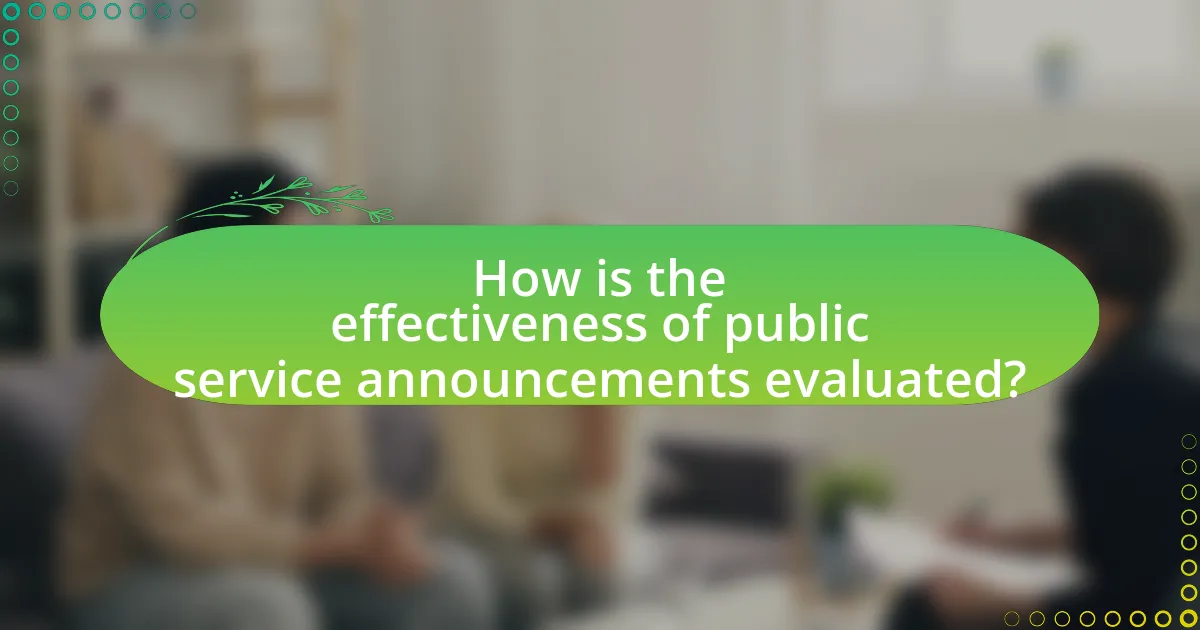
How is the effectiveness of public service announcements evaluated?
The effectiveness of public service announcements (PSAs) is evaluated through various methods, including pre- and post-campaign surveys, focus groups, and analysis of behavioral changes. These methods assess the reach, comprehension, and impact of the PSAs on the target audience, particularly children. For instance, surveys can measure changes in knowledge or attitudes before and after exposure to the PSA, while focus groups provide qualitative insights into children’s perceptions and understanding of the message. Additionally, behavioral analysis can track changes in actions, such as increased safety practices or healthier lifestyle choices, directly linked to the PSA’s content. Research has shown that PSAs that are age-appropriate and engaging significantly enhance retention and influence behavior, underscoring the importance of tailored messaging in evaluating effectiveness.
What metrics are used to assess the impact of these announcements?
Metrics used to assess the impact of public service announcements aimed at children include reach, engagement, behavior change, and knowledge retention. Reach measures the number of children exposed to the announcement, while engagement assesses how actively children interact with the content, such as through likes, shares, or comments. Behavior change evaluates whether the announcement has influenced children’s actions or decisions, often measured through surveys or observational studies. Knowledge retention gauges how well children remember the information presented, typically assessed through quizzes or follow-up interviews. These metrics provide a comprehensive understanding of the effectiveness of the announcements in achieving their intended goals.
How do surveys and focus groups contribute to effectiveness evaluation?
Surveys and focus groups contribute to effectiveness evaluation by providing direct feedback from the target audience regarding their perceptions and understanding of public service announcements aimed at children. Surveys quantitatively assess the reach and impact of these announcements, allowing for statistical analysis of children’s awareness and attitudes. Focus groups qualitatively explore children’s reactions, preferences, and comprehension, offering deeper insights into how the messages resonate with them. Research indicates that combining both methods enhances the evaluation process, as surveys can identify trends while focus groups can explain the underlying reasons for those trends, ultimately leading to more effective communication strategies.
What role does behavioral change play in measuring success?
Behavioral change is a critical indicator of success in evaluating public service announcements aimed at children. It reflects the extent to which the target audience alters their attitudes, beliefs, or actions in response to the messaging. For instance, a study by the Centers for Disease Control and Prevention found that effective public service announcements can lead to a measurable increase in healthy behaviors among children, such as improved dietary choices or increased physical activity. This change in behavior serves as a tangible metric for assessing the impact of the announcements, demonstrating their effectiveness in achieving intended outcomes.
What challenges exist in evaluating the effectiveness of public service announcements for children?
Evaluating the effectiveness of public service announcements (PSAs) for children faces several challenges, primarily due to the developmental differences in children’s cognitive abilities and comprehension levels. Children may not fully understand the message or its implications, leading to difficulties in measuring their retention and behavioral changes. Additionally, the diverse age range among children complicates the evaluation process, as younger children may interpret messages differently than older ones.
Moreover, the influence of external factors, such as parental guidance and peer interactions, can skew results, making it hard to isolate the impact of the PSA itself. Research indicates that children’s media literacy varies significantly, which further complicates the assessment of how effectively they engage with PSAs. For instance, a study published in the Journal of Health Communication found that children aged 8 to 12 showed varying levels of understanding and recall of health-related PSAs, highlighting the inconsistency in their responses.
These factors collectively hinder the ability to accurately evaluate the effectiveness of PSAs aimed at children, necessitating more tailored approaches to assessment that consider these unique challenges.
How do external factors influence the perception of these announcements?
External factors significantly influence the perception of public service announcements aimed at children by shaping the context in which these messages are received. For instance, the presence of parental guidance, peer influence, and media exposure can alter how children interpret the content of these announcements. Research indicates that children are more likely to respond positively to messages when they are reinforced by trusted adults or peers, as demonstrated in studies showing that children who discuss announcements with parents exhibit better understanding and retention of the information presented. Additionally, the timing and medium of the announcement, such as whether it is aired during children’s programming or integrated into educational settings, can affect engagement levels and overall effectiveness.
What limitations are faced in data collection and analysis?
Limitations in data collection and analysis for evaluating the effectiveness of public service announcements aimed at children include sample size constraints, response bias, and ethical considerations. Sample size constraints often arise due to difficulties in accessing a diverse group of children, which can lead to non-representative data. Response bias occurs when children may not provide honest answers due to social desirability or misunderstanding of questions, affecting the validity of the data collected. Ethical considerations, such as obtaining parental consent and ensuring the well-being of child participants, can further complicate data collection efforts. These limitations can hinder the reliability and generalizability of findings in this area of research.
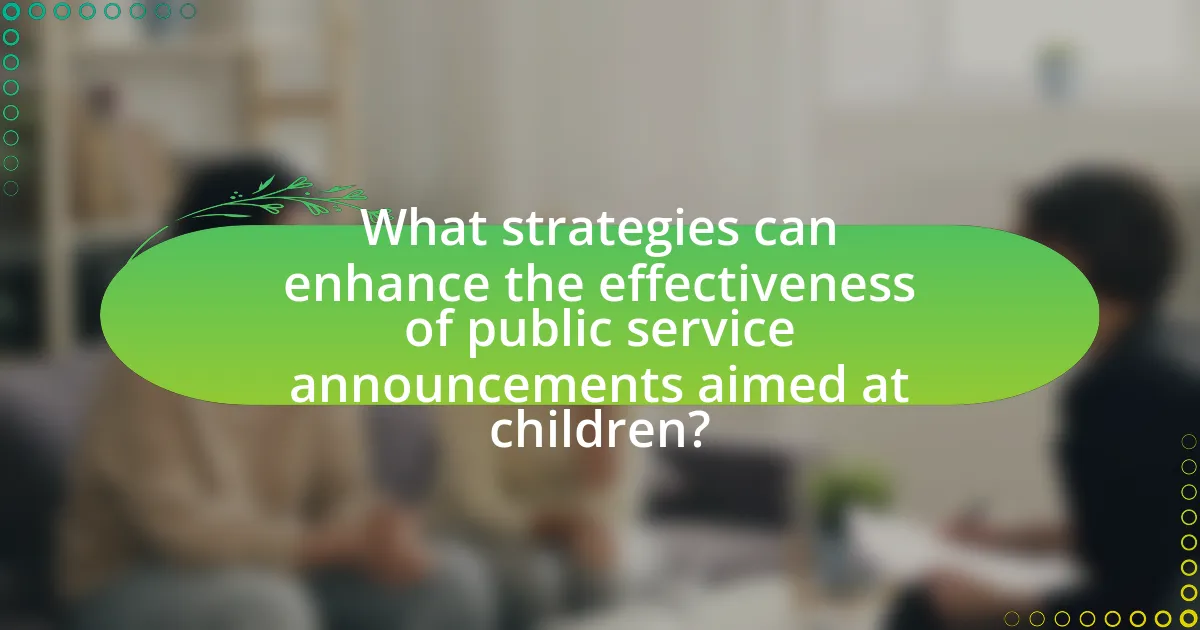
What strategies can enhance the effectiveness of public service announcements aimed at children?
To enhance the effectiveness of public service announcements aimed at children, utilizing engaging visuals and relatable characters is crucial. Research indicates that children respond better to messages that incorporate colorful graphics and familiar figures, as these elements capture their attention and facilitate understanding. For instance, a study published in the Journal of Health Communication found that animated characters significantly increased message retention among children aged 6 to 12. Additionally, incorporating interactive elements, such as quizzes or games, can further engage children and reinforce the message, as evidenced by programs that successfully used gamification to promote healthy behaviors.
How can storytelling be utilized to engage young audiences?
Storytelling can be utilized to engage young audiences by creating relatable characters and scenarios that resonate with their experiences and emotions. This method captures attention and fosters empathy, making the message more impactful. Research indicates that narratives can enhance memory retention and understanding; for instance, a study published in the Journal of Communication found that children who were exposed to stories related to health topics demonstrated better recall and comprehension compared to those who received factual information alone. By integrating storytelling into public service announcements, creators can effectively communicate important messages while maintaining the interest of young viewers.
What elements of storytelling resonate most with children?
Elements of storytelling that resonate most with children include relatable characters, engaging plots, and vivid imagery. Relatable characters allow children to see themselves in the story, fostering emotional connections. Engaging plots capture their attention and maintain interest, often featuring adventure or conflict that encourages problem-solving. Vivid imagery stimulates imagination, making the story more memorable. Research indicates that children are more likely to remember and engage with stories that incorporate these elements, as they enhance comprehension and retention (Nikolajeva & Scott, 2006, “How Picturebooks Work”).
How can visuals and animations improve message retention?
Visuals and animations significantly enhance message retention by engaging multiple cognitive processes simultaneously. Research indicates that when information is presented visually, it is processed more efficiently, leading to improved recall. For instance, a study published in the journal “Educational Psychology” by Mayer and Moreno (2003) found that students who learned with multimedia presentations that included visuals and animations performed better on retention tests than those who received text-only information. This is attributed to the dual coding theory, which posits that visual and verbal information are processed in different channels, allowing for better integration and memory formation. Thus, incorporating visuals and animations in public service announcements aimed at children can lead to higher retention rates of the conveyed messages.
What role do parents and educators play in reinforcing the messages of public service announcements?
Parents and educators play a crucial role in reinforcing the messages of public service announcements (PSAs) aimed at children by providing context, discussion, and reinforcement of the themes presented. Parents can engage their children in conversations about the content of PSAs, helping them understand the importance of the messages, such as health, safety, or social responsibility. Educators can integrate PSA themes into classroom discussions and activities, thereby enhancing comprehension and retention of the information. Research indicates that when parents and educators actively discuss and model the behaviors promoted in PSAs, children are more likely to adopt those behaviors. For instance, a study published in the Journal of Health Communication found that parental involvement significantly increased the effectiveness of health-related PSAs among children, demonstrating that active engagement leads to better understanding and behavior change.
How can collaboration with schools enhance the reach of these announcements?
Collaboration with schools can significantly enhance the reach of public service announcements aimed at children by integrating these messages into the educational environment. Schools serve as a direct channel to children, allowing announcements to be disseminated during school hours, through newsletters, and via school events. Research indicates that children spend approximately 6-7 hours a day in school, making it an ideal setting for impactful communication. Furthermore, studies show that when schools actively participate in promoting public service announcements, such as through curriculum integration or school assemblies, the retention and understanding of the messages improve. For instance, a study by the National Institute on Media and the Family found that educational programs that included parental involvement and school collaboration resulted in a 30% increase in message retention among children. Thus, collaboration with schools not only broadens the audience but also enhances the effectiveness of the announcements.
What resources can parents use to discuss these topics with children?
Parents can use age-appropriate books, educational websites, and interactive apps to discuss the effectiveness of public service announcements aimed at children. For instance, books like “The Berenstain Bears: Big Election” introduce civic topics in a relatable manner. Websites such as PBS Kids offer resources and activities that explain public service messages through games and videos. Additionally, apps like “Kahoot!” can facilitate discussions by allowing parents and children to engage in quizzes about public service announcements, reinforcing understanding through interactive learning. These resources provide concrete examples and engaging formats that help children grasp the significance of public service announcements.
What best practices should be followed when creating public service announcements for children?
When creating public service announcements for children, it is essential to use age-appropriate language and visuals to ensure comprehension and engagement. Research indicates that children respond better to messages that are simple, clear, and relatable, which enhances their understanding and retention of the information presented. Additionally, incorporating storytelling elements can capture children’s attention and make the message more memorable, as narratives are effective in conveying complex ideas in an accessible manner.
Furthermore, utilizing familiar characters or themes can increase relatability and encourage children to connect with the message. Studies show that children are more likely to engage with content that features characters they recognize or aspire to emulate. Lastly, testing the announcements with the target age group before widespread release can provide valuable feedback, ensuring that the content resonates and effectively communicates the intended message.
How can cultural sensitivity be incorporated into messaging?
Cultural sensitivity can be incorporated into messaging by ensuring that the content respects and reflects the diverse backgrounds of the target audience. This involves using inclusive language, avoiding stereotypes, and incorporating culturally relevant symbols and narratives that resonate with different communities. Research indicates that culturally tailored messages are more effective; for instance, a study published in the Journal of Health Communication found that public service announcements that consider cultural contexts significantly improve engagement and understanding among children from various backgrounds.
What are the key considerations for age-appropriate content?
Key considerations for age-appropriate content include developmental appropriateness, cultural relevance, and emotional impact. Developmental appropriateness ensures that the content aligns with the cognitive and emotional maturity of the target age group, which is crucial for comprehension and engagement. Cultural relevance involves reflecting the values, norms, and experiences of the audience, making the content relatable and meaningful. Emotional impact focuses on the ability of the content to resonate with children’s feelings, promoting positive responses and understanding. Research indicates that content tailored to these considerations enhances the effectiveness of public service announcements aimed at children, as it fosters better retention and encourages appropriate behavioral responses.
